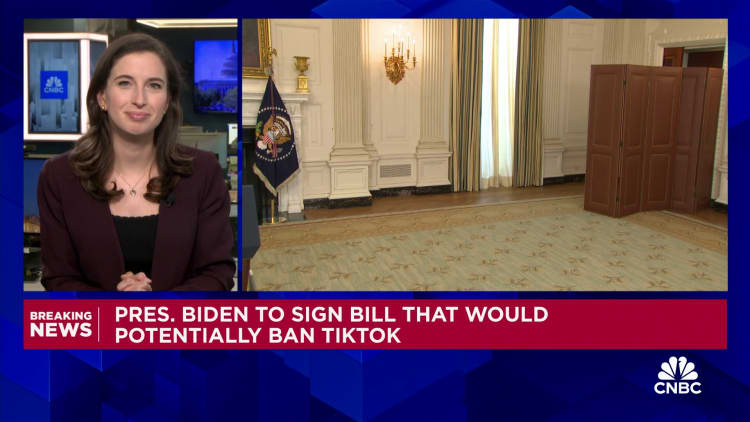Job creation exceeded expectations in February, but the unemployment rate rose and job growth in the previous two months was nowhere near as strong as initially reported.
The Labor Department reported Friday that nonfarm payrolls rose by 275,000 for the month, while the unemployment rate rose to 3.9%. Economists surveyed by Dow Jones had expected jobs to grow by 198,000.
In February, growth was a step higher than in January, where there was a significant downward revision from 353,000 to 229,000. December job growth was also revised downward from 333,000 to 290,000, bringing the two-month total to 167,000 fewer jobs than originally reported.
The unemployment rate rose as the household survey used to calculate the unemployment rate showed a decline of 184,000 in the workforce. The increase came even as the labor force participation rate remained stable at 62.5%, although the “prime working age” rate increased by two tenths of a percentage point to 83.5%. The company survey shows the total number of jobs.
Average hourly wages, closely watched as an indicator of inflation, posted a slightly smaller increase than expected for the month and a slowdown from a year ago. Wages rose just 0.1% month-over-month, a tenth of a percentage point below the estimate, and were 4.3% higher than a year ago, less than January’s 4.5% gain and slightly below the 4.4 estimate %.
The jobs data is likely to encourage the Federal Reserve to cut interest rates later this year, although the timing and extent remain uncertain.
Stocks rose on Friday following the news, with the Dow Jones Industrial Average gaining nearly 150 points in early trading. Treasury yields fell; The benchmark 10-year note was last at 4.07%, down about 0.02 percentage points from the session.
“There is literally a data point for every view of the spectrum,” Liz Ann Sonders, chief investment strategist at Charles Schwab, said of the report. These range from “The economy is plunging into recession” to “Goldilocks, everything is fine, nothing to see here. It’s definitely a mixed bag,” she added.
Job creation focused on part-time positions. According to the household survey, full-time jobs fell by 187,000 while part-time jobs increased by 51,000. An alternative unemployment rate, sometimes called the “real” unemployment rate, which includes discouraged workers and those who hold part-time jobs for economic reasons, rose slightly to 7.3%.
From an industry perspective, healthcare leads the way with 67,000 new jobs. The state again made a large contribution with 52,000, while restaurants and bars added 42,000 and welfare increased by 24,000. Other winners included construction (23,000), transport and warehousing (20,000) and retail (19,000).
The report shows that markets are nervous about overall economic growth and the possible impact on monetary policy. Futures trading moved slightly following the report, with traders now pricing in greater certainty of a first Fed rate cut in June.
“There is nothing new between this report and last month’s report. It doesn’t really give us a lot of information, other than to say qualitatively that we’re still creating good jobs and wages are staying a little higher than we’d like,” said Dan North, senior economist at Allianz Trade Americas .
North added that the report likely “doesn’t change the Fed’s view,” although he believes the first rate cut may not come until July.
In recent days, Fed officials have sent mixed signals suggesting inflation is cooling, but not to the extent that would justify the first rate cuts since the early days of the Covid pandemic crisis.
Fed Chairman Jerome Powell, speaking on Capitol Hill this week, described the labor market as “relatively tight” but in better equilibrium since the days when the number of job vacancies outpaced the number of available workers exceeded two to one.
Additionally, he said that inflation has “declined significantly,” although there is still insufficient progress toward the Fed’s 2 percent target. But on Thursday he told the Senate Banking Committee that the Fed was “not far away” from starting to ease monetary policy because of the economic situation.
“We have a data-dependent diet, which means we are all at the mercy of the data,” Sonders said. “Large moves outside the consensus range in labor market data and inflation data can tip the scales. But consistent numbers or mixed numbers, then we all just skip to the next report.”
Job creation remains strong despite a spate of high-profile layoffs, particularly in the tech industry. Recently, companies such as Cisco, Microsoft and SAP have announced significant staff cuts. Outplacement firm Challenger, Gray & Christmas said this was the worst February for layoff announcements since 2009, in the late days of the global financial crisis.
However, workers still appear to be able to find employment. The number of job vacancies remained virtually unchanged in January at nearly 9 million and still outpaced the number of unemployed by 1.4 to 1. The number of weekly jobless claims was little changed, standing at 217,000 in the most recent filing week, although the number of ongoing claims just exceeded 1.9 million, at four The one-week moving average for this metric reached its highest level since December 2021.
Given the conflicting signals, markets have scaled back expectations of Fed rate cuts. Traders in the futures market expect the first cut to occur in June, up from the March expectation earlier in the year, and are now anticipating a total of four cuts this year compared to six or seven previously, according to data from CME Group.
Don’t miss these stories from CNBC PRO:
Source link
2024-03-08 15:37:41
www.cnbc.com











